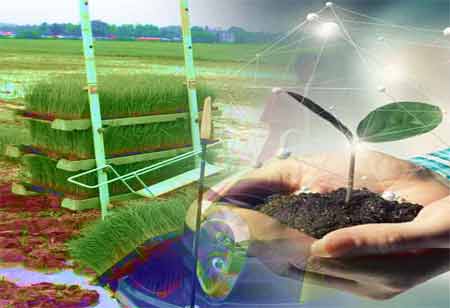Thank you for Subscribing to Agri Business Review Weekly Brief
Understanding the Different Faces of Indoor Farming
Indoor farming is a new method of growing vegetables and other plants under controlled environmental conditions.

By
Agri Business Review | Wednesday, January 18, 2023
Stay ahead of the industry with exclusive feature stories on the top companies, expert insights and the latest news delivered straight to your inbox. Subscribe today.
The different faces of indoor farming are important to focus on, as they offer an understanding of the potential environmental effects that large-scale indoor farming may have on air, water, and soil.
FREMONT, CA: Indoor farming is a new method of growing vegetables and other plants under controlled environmental conditions. These farm systems are variously referred to as indoor and vertical farms, greenhouses, controlled environment agriculture (CEA), and plant factories. There are different characteristics of controlled environments such as indoor vertical farms and greenhouses, which are the primary architectures used for the large-scale production of leafy greens and other vegetables requiring natural or artificial light.
Greenhouses have been the workhorse for indoor growers for years, particularly in the production of flowers and ornamental plants. Modern, high-tech greenhouse designs are prominent all over the world, and several examples of these farms are observed worldwide. Greenhouses were designed for tomatoes, but now they focus on the production of kale, microgreens, lettuce, herbs, squash, and other types of fresh produce. These greenhouses were earlier located in rural areas, but today it is seen near urban and peri-urban areas to bring operations closer to population centres to save money and mitigate the carbon footprint associated with transportation miles.
A common thing about greenhouse design is that all growth takes place on a single level; they are wrapped in materials such as glass, transmitting natural sunlight, and include climate control and irrigation equipment. They may use a modest amount of supplemental artificial lighting during the winter months.
Growing leafy greens and other plants in buildings has emerged in the past few years, whereby plants are grown vertically and hydroponically using artificial lights. Indoor vertical farms are located in warehouses or similar structures that have been retrofitted to offer greater heating, ventilation, and cooling for the benefit of plant production and racking systems to support the production systems. The PVC grow systems transport nutrient-rich water to the root zone of the plants, and the water is then returned to the primary reservoir. Built as closed recirculating systems, indoor vertical farms use a fraction of the amount of water as greenhouses or open-field methods.
The advent of cost-effective LED lighting technologies has helped farmers provide plants with the right wavelengths of light, intensity, and photoperiods to optimise growth. Other advances include automation, IoT, artificial intelligence and information technologies contributing to smart farming.
Although modern LEDs are efficient compared to HID, high-pressure sodium, or fluorescent lamps, the capital and operating costs of these artificial lighting systems are crucial, as are the required climate control systems. Greenhouses require significant investment in heating and cooling equipment to maintain stable temperatures and humidity, resulting in considerable operating costs in buildings with low R-value membranes.
The primary benefit of this design is that the light comes free, despite limited growth to a single level. Indoor vertical farms can benefit from well-insulated structures reducing heating and cooling costs, and growing can take place on various levels. However, these savings come at the cost of relatively high electricity usage for artificial lighting. With the increased efficiencies of LED sensing systems, there will be fewer operational costs. They modulate light to the maximum required for the plants, combine indoor farms with renewable energy sources like solar and geothermal, and design buildings favouring energy efficiency.





